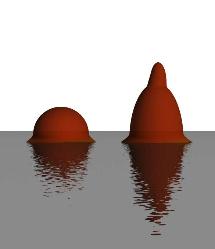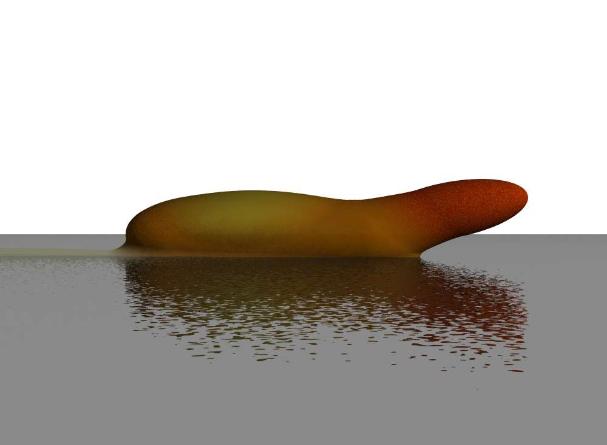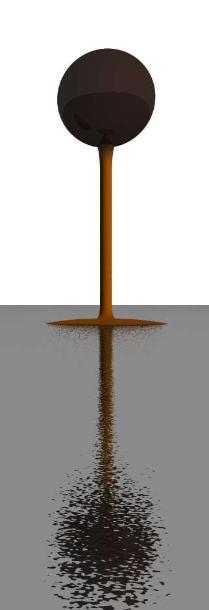LM: Biologia Cellulare e Molecolare Avanzata16_lecture 10/11/10
Amoebae that form slime moulds
| Most amoebae live as single-celled organisms in the water and soil, but some amoebae can also form multicellular slime structures. Amoebae are not bacteria, rather they are micro-organisms belonging to a group called the Protoctista. Amoebal cells are typically 10-100 times the diameter of bacterial cells and have the structure typical of animal cells, but they are not animals because animals always form complex multicellular bodies. |  Above a mound of assembling Dictyostelium amoebae on a glass slide, left, and a later stage with a tip, right. |
| Some amoebae (called myxamoebae), such as Dictyostelium, will live in the soil as single cells that feed and reproduce for many generations, but if these cells start to run out of food in their neighbourhood, then they send chemical signals to one another and the amoebae respond by streaming in long conveys to a common rendezvous. When they arrive, these amoebae do something very strange, they form a multicellular mound or aggregate that piles on new coming cells, getting taller and taller. Eventually the cells at the tip of the mound form a nipple-like protuberance and this takes charge as it is designed to become the 'head' of our new organism. All this happens on a small scale, these mounds are only a few millimetres in diameter. |  Above: a slime mould grex crawling across a glass slide, leaving a trail of slime behind it. |
| Eventually, this tipped mound falls over and starts crawling around like a slug, with the tip raised up like a snout behind which the rest of the body follows, leaving a trail of slime behind it as it does so. So our single celled creatures have all come together to form a temporary multicellular body! The reason is, that this way they are bigger and so can move faster and further. The job of the snout is to find a suitable place high up in the light and air, from which to release spores into the wind or running rain-water. This slug-like creature is called a grex, and is one to a few millimetres long, which is not bad for something that started out as amoebae one hundredth of a millimetre in diameter! Each grex contains about 100 000 separate amoebae, all encased in slime and working together as a single unit! Grexes come in a variety of colours, depending on species, but white and orange/red are common colours. When a grex finally finds a suitable place (or runs out of time) it will stop moving, then form a mound which elongates into a relatively long stalk (several millimetres long) with a rounded structure at the tip (the colour and form varies tremendously depending upon species). This structure, called a sporangium, will dry and break open, releasing amoebae in the form of spores, into the wind or rain water to be carried off to new habitats. The spores are dormant cells with tough walls to resist drying out. Hopefully some of the spores will find a suitable place and germinate into single-celled amoebae and live and reproduce happily, until they run out of food that is ... then the cycle will start all over again! |  |
